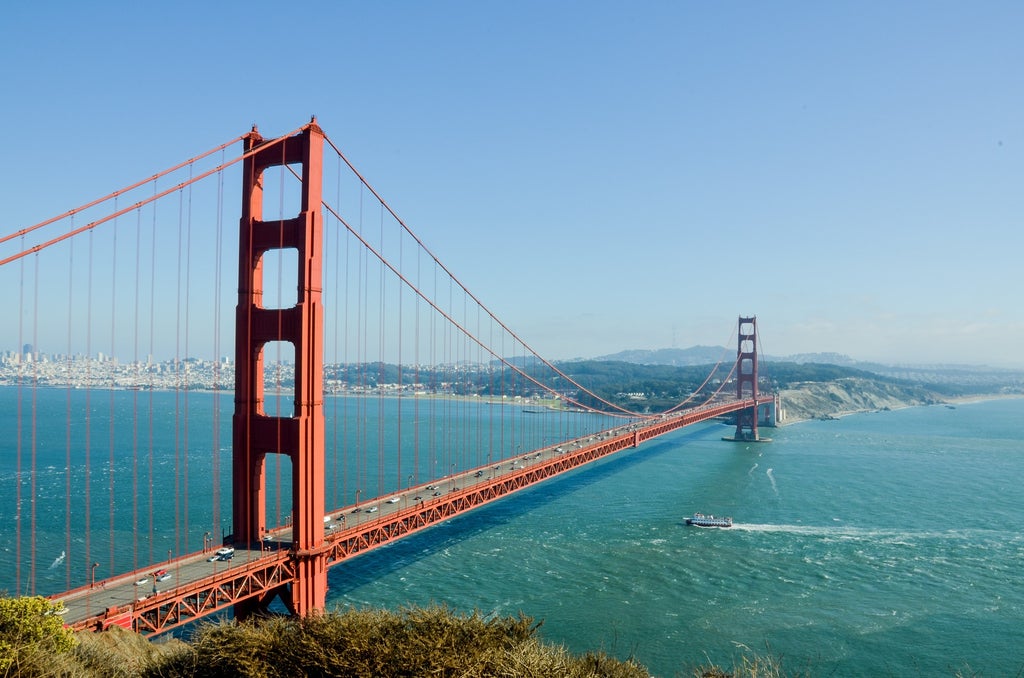
A 3.9 magnitude earthquake shook the North Bay Area in California early on Thursday morning, according to the United States Geological Survey (USGS).
The quake struck at 3.40am about 12 miles northeast of Healdsburg, in the Geysers area of Sonoma County, approximately 70 miles north of San Francisco.
While Californians are no strangers to the ground shaking, geologists continue to warn that a massive earthquake could hit the Bay Area at any moment.
The Hayward Fault, which runs east of the bay, underneath the cities of Fremont, Oakland, Berkeley, and Richmond, is believed to be primed to produce a 7.0 magnitude tremor.
A study of the fault by the USGS notes that it produces a large earthquake every 100 to 220 years, and the last one was more than 150 years ago.
In a scenario the USGS named “HayWired,” an imagined magnitude 7.0 earthquake strikes the Bay Area on the Hayward Fault, underneath one of the most densely populated and urbanised parts of North America — home to more than seven million people.
The purpose of the study is to analyse the impact of such a disaster to estimate fatalities, injuries, water outages, fires, and other major disruptions. Scientists emphasise that it is not a prediction, but more of a planning tool to prepare.
In the hypothetical quake, the epicentre is on the Hayward Fault beneath the city of Oakland at 4.18pm on 18 April 2018 — the anniversary of the 1906 magnitude 7.8 San Francisco earthquake that devastated the city.
The mainshock ruptures the fault along its length for about 52 miles. East-bay cities are hardest hit by violent ground shaking and sudden fault offset. This offset, movement of opposite sides of the fault relative to each other, is more than six feet in some places.
Strong shaking is felt throughout the region, causing the ground to become liquid-like in sandy, water-saturated soils near the bay, and triggering landslides in the hills. The biggest aftershock is set in Santa Clara County, near San Jose
The study says: “When the Hayward Fault ruptures — the roads, the pipes, the wires, the things that connect everyone to people and places — will go HayWired.”
In the model, as many as 800 people die and 18,000 more are injured. A further 2,500 people would need to be rescued from collapsed buildings, while another 22,000 would be trapped in elevators.
Additionally, between 77,000 and 152,000 households could be displaced, and some residents would be without water for six weeks — or six months in the worst hit areas.
The equivalent of 52,000 single family homes could be lost as fires turn into conflagrations with little water available for firefighting.
All services would be disrupted and it would be the first major earthquake to hit the US in the age of the internet, raising the question of how people would cope in a disconnected world.
There would also be dozens of aftershocks causing more damage and requiring further repairs.
Property damage and business losses would exceed $82bn. Fires could cost hundreds more lives and an additional $30bn in damage.
The Bay Area has already invested over $50bn since the 1989 Loma Prieta quake — the last major tremor to hit the Bay Area — strengthening potential points of failure, infrastructure, and buildings. The study insists that more preparedness is needed.
There is no way to predict exactly when the next large earthquake will hit California, but it is generally agreed by geologists that the Hayward Fault will produce one in the next 30 years.
The Hayward Fault’s infamous twin, the San Andreas Fault, is believed to be capable of triggering an even more devastating earthquake, but that is much less likely.
According to the USGS, there is only about a two per cent chance of that happening in the next 30 years.







